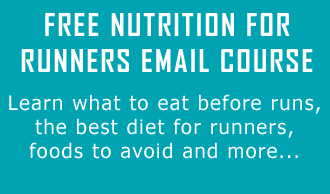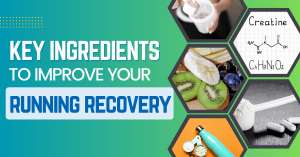In workouts or on race day, you want everything to go right. One of the most common things that can go wrong is in your gut: an upset stomach, digestive problems, cramping, bloating, or gas can all put a serious damper on a run, workout, or race.
Today we’ll be taking a look at lactose intolerance, one major factor that can cause gastrointestinal issues before, during, or after your running workouts.
What is lactose intolerance
Lactose intolerance is, as the name suggests, a condition characterized by an inability to process lactose, a form of sugar that is in milk, cheese, and other dairy products.
People with lactose intolerance don’t produce a specific enzyme in their stomach which breaks down lactose. Because their body lacks the enzyme and hence can’t absorb it, any lactose that’s ingested is instead consumed by bacteria in the digestive system, which produces gas, bloating, cramps, nausea, and diarrhea.
Worldwide, lactose intolerance is actually the norm—the vast majority of the population in most areas of the world can’t properly digest lactose. But among people of European descent, lactose intolerance is less common, only affecting about 20 percent of people.
Doctors can easily diagnose lactose intolerance by giving you a “test dose” of a large amount of lactose dissolved in water, then measuring either your blood sugar or the amount of hydrogen gas in your breath. Both will give a clear picture of whether or not your body is properly absorbing lactose. This test has some unfortunate side effects for people who are lactose intolerant, though, as the amount of lactose used in the test is equivalent to about a quart of milk.
How can lactose intolerance impact your running?
One study published in 1992 by S.N. Sullivan and C. Wong examined the incidence of gastrointestinal problems during or following workouts and races in distance runners. Aside from the obvious findings (the majority of runners have had gastrointestinal issues at some point while running), Sullivan and Wong also found that runners who suffered from gastrointestinal issues before competitions were much more likely to be lactose intolerant.
- This means that runners with lactose intolerance might have digestive systems that are much more sensitive to race-day nerves.
- Another possible explanation is that these runners were consuming dairy products which led directly to their gastrointestinal issues. Either way, dairy can be trouble for runners with lactose intolerance.
Although individual sensitivity to lactose varies even among people who are lactose intolerant, research indicates that most people with lactose intolerance can handle small amounts of lactose-containing foods.
A 2010 review study on lactose intolerance by researchers at the University of Minnesota describes how many people with “lactose intolerance” really have lactose malabsorption, meaning that their body still produces enough enzymes to process lactose in small doses.
That being said, it’s still a good idea to avoid dairy products immediately before a tough workout or a race if you know that you don’t handle lactose well.
Managing lactose intolerance
When it comes to managing lactose intolerance, the proliferation of alternative diets and increased awareness of food restrictions have made it fairly easy to find replacements for milk, cheese, and other dairy products. You’ll have to experiment to find out how much, if any, lactose you can handle in your food before you experience problems with your running.
Though there’s been no research on this specifically, it wouldn’t be surprising if going for a run amplified the severity of lactose intolerance or malabsorption, given that running is known to affect the gastrointestinal system in a number of ways.
Because of the importance of dairy in traditional nutrition plans, you should strive to keep up your calcium intake if you choose to cut dairy out of your diet.
Lower dairy consumption is correlated with low calcium intake in teenagers and young adults (hence the “Got Milk?” campaigns), and is likely to play at least some role in bone health in adults, too.
Takeaway message
If you’ve had a sensitive digestive system on race day, or gastrointestinal problems with running in general, you might want to find out whether you’re lactose intolerant.
Getting tested by a doctor can provide a definitive answer, but you can also experiment on your own with reducing or eliminating dairy before tough workouts or big races and seeing how your body responds.
If you cut dairy out of your diet, you should not have too much trouble finding lactose-free foods to replace dairy products, but you should make sure you’re getting enough calcium elsewhere in from the food you eat.








